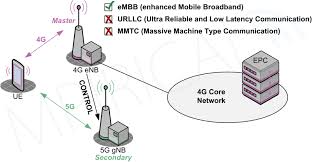VME (Versa Module Eurocard): Understanding Its Applications and Advantages
telcomatraining.com – VME (Versa Module Eurocard) is a widely used computer bus standard designed for high-speed data transfer and robust performance. Originally developed in the early 1980s, VME remains relevant due to its reliability, scalability, and compatibility with industrial and military applications. This article explores the key applications of VME and the advantages it offers over other bus architectures.
What is VME?
VME is a modular backplane system that allows multiple processor and peripheral boards to communicate efficiently. It uses a parallel bus architecture, enabling fast data transfer and real-time processing. The VME standard supports various configurations, making it adaptable to different industries requiring robust embedded systems.
Applications of VME
1. Industrial Automation
VME is extensively used in industrial automation due to its durability and long product lifecycle. Manufacturing plants rely on VME-based systems for process control, robotics, and monitoring operations. Its high reliability ensures seamless operation in harsh environments.
2. Defense and Aerospace
The defense sector utilizes VME for mission-critical applications, including radar systems, avionics, and weapon control systems. Its real-time processing capabilities make it an ideal choice for applications that require quick data acquisition and decision-making.
3. Telecommunications
Telecommunication networks depend on VME systems for signal processing, network management, and switching operations. The standard’s ability to handle high-speed data transfers ensures efficient communication in large-scale networks.
4. Medical Equipment
Medical imaging devices and diagnostic machines use VME-based embedded systems to process data accurately and in real-time. Applications such as MRI, CT scans, and laboratory automation benefit from VME’s stability and performance.
5. Scientific Research and Instrumentation
Research laboratories and scientific institutions use VME for data acquisition in experiments, particle accelerators, and astronomy. Its capacity to integrate multiple modules provides flexibility for complex research applications.
Advantages of VME
1. Scalability and Modularity
VME’s modular nature allows users to expand their systems by integrating additional boards without redesigning the entire architecture. This flexibility is beneficial for industries requiring system upgrades over time.
2. High Reliability and Longevity
Unlike many modern bus standards that frequently update, VME offers a stable platform with long-term support. This reliability is crucial for mission-critical applications in defense, medical, and industrial automation.
3. Real-Time Processing Capabilities
VME supports real-time data processing, making it suitable for applications where low-latency responses are required. This is particularly beneficial in defense, aerospace, and medical diagnostics.
4. Broad Industry Adoption and Support
Many industries continue to support and manufacture VME-compatible components, ensuring long-term availability and cost-effective maintenance.
5. Robust Performance in Harsh Environments
Designed to operate in extreme conditions, VME-based systems withstand high temperatures, vibrations, and electromagnetic interference, making them ideal for military and industrial applications.
Conclusion
Despite the emergence of newer bus standards, VME (Versa Module Eurocard) remains a trusted and widely used solution in industries that demand high reliability, modularity, and real-time processing. Its adaptability across various fields, from defense to telecommunications, ensures its continued relevance. As industries evolve, VME continues to be a reliable choice for mission-critical applications, reinforcing its significance in the embedded systems landscape.







